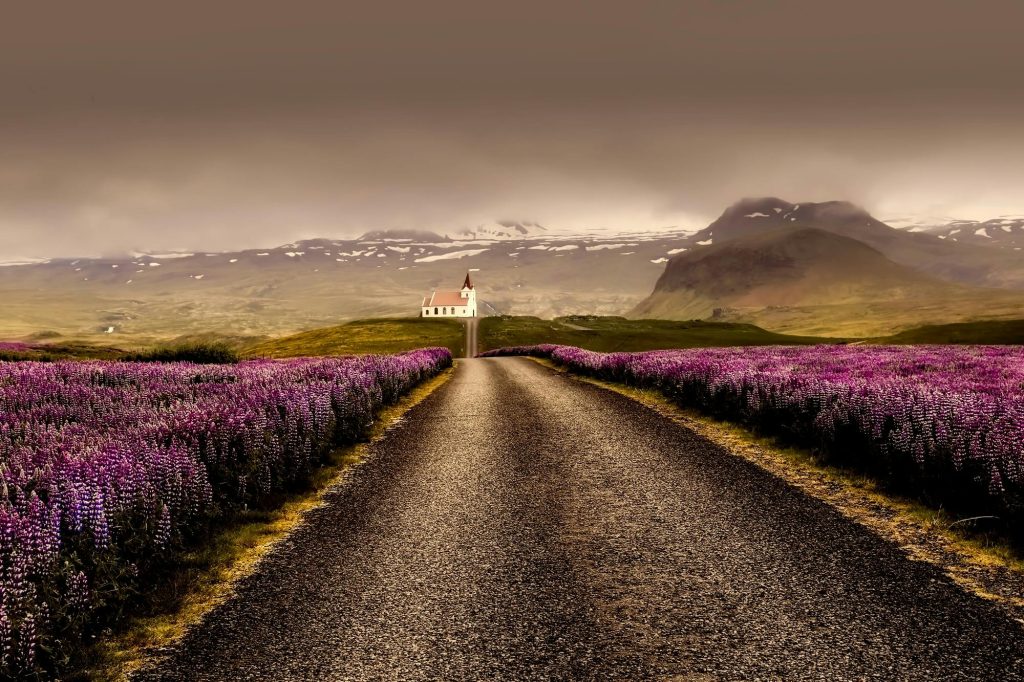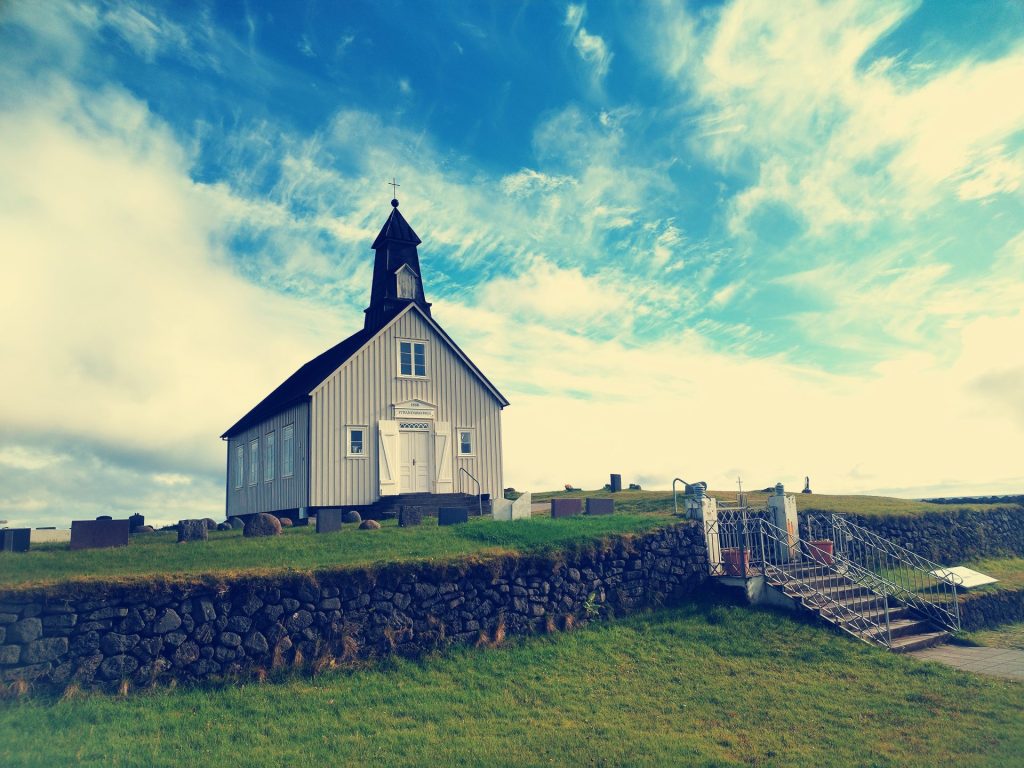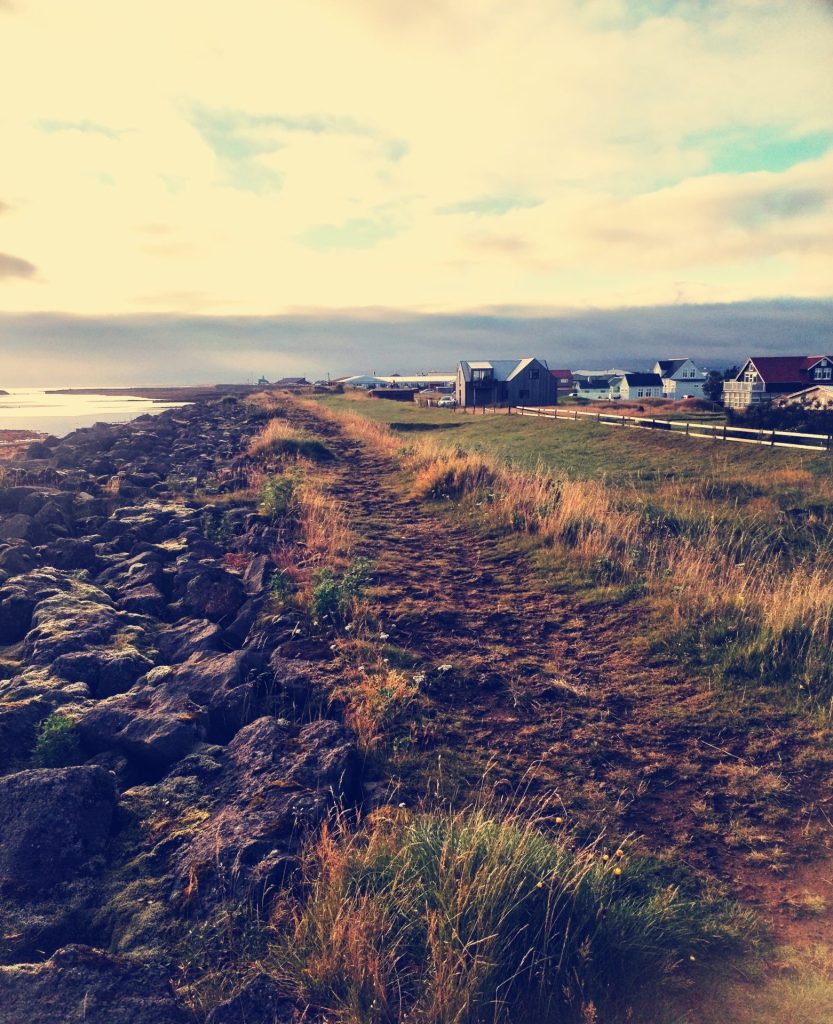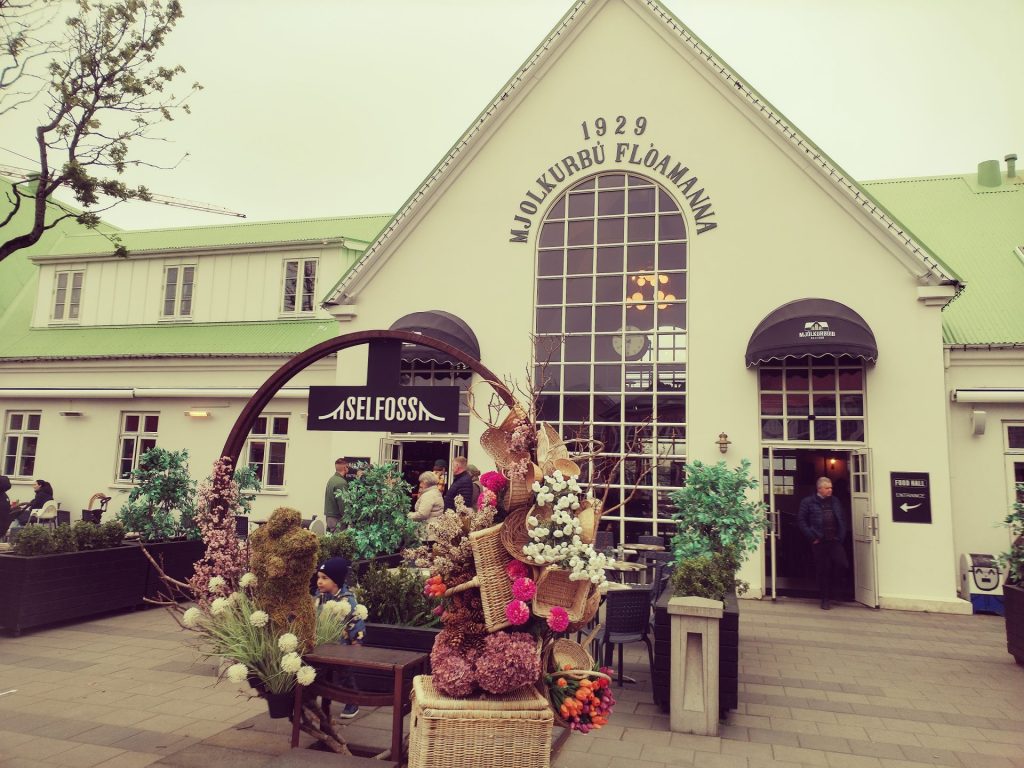Iceland is a country where nature itself dictates the rhythm of life. Rugged fjords, volcanic plains, glaciers, and endless tundra create a backdrop for human history, as people have struggled for millennia to find meaning and belonging in this landscape. In this context, Icelandic churches are not merely places of worship – they are symbols of humanity’s spiritual presence in a world that often seems inhospitable.
History and Origins of the Churches

The first churches in Iceland appeared after the adoption of Christianity around the year 1000. These were small, often modest wooden or stone buildings, constructed by local communities with their own hands. Each church was a manifestation not only of religiosity but also of the need for community – within a landscape where distances between settlements were vast, the church became the center of spiritual life as well as a place for gatherings, conversations, and a sense of belonging.
In remote regions of Iceland, churches were built to withstand the harsh climate: steep grass-covered roofs, thick stone walls, and small windows to shield against the wind. The simplicity of their forms and the durability of their materials reflect both the pragmatism of the inhabitants and a deep sense of harmony with nature.
Architecture in Harmony with the Landscape
Icelandic churches impress not through grandeur, but through a subtle dialogue with their surroundings. Tiny sanctuaries stand alone on hills, among lava fields, or on the edges of fjords. Their silhouettes rise toward the sky while blending into the landscape so naturally that it is difficult to tell where nature ends and human craftsmanship begins.
The interiors are simple – wooden pews, a modest altar, and soft light streaming through stained-glass windows. The silence inside these churches transforms every glance at the surrounding landscape into meditation. Here, one experiences both the smallness of the individual before the power of nature and a sense of transcendence, as if the entire universe is concentrated in a single point.
Spirituality and the Need for Community
A small church in a remote village serves many functions. It is a place of prayer and reflection, but also of social cohesion. Icelanders, despite the apparent harshness of daily life, have long sought spiritual connection and a sense of community in these spaces. A gathering in the church is a moment when an individual can simultaneously feel solitude and belonging to something larger.
The Philosophy of Simplicity and Transcendence
Icelandic churches teach that spirituality does not require opulence or monumental architecture. It is precisely the simplicity of form, the quiet interior, and the solitude within the landscape that make them places where one feels connected to something greater -an omnipotent nature, history, or spiritual tradition.
The symbolism of these churches is dual: on one hand, they express transcendence; on the other, the human need for community. A small wooden church on a hill or a stone chapel in a fjord reminds us that humans can find their place even in the harshest world, and that spirituality helps overcome solitude while strengthening social bonds.
Churches of Southern Iceland: Harmony of Nature and Architecture

Southern Iceland is home to some of the most beautiful sanctuaries on the island. In this region, the landscape subtly changes: volcanic plains intertwine with green valleys, and the Atlantic Ocean washes the coast. Here, small white churches stand out against the dramatic backdrop of glaciers and mountains, becoming almost theatrical points on the map of spiritual geography.
One of the most charming southern churches is Strandarkirkja, a small white church standing alone on the coast. Its simple form and wooden cross on the facade rise in harmony with the surrounding nature. Every detail – from the modest stained-glass windows to the carefully laid stone foundations – seems part of the landscape rather than separate from it. The interior, filled with soft light, creates a sense of calm and focus, allowing visitors to experience both spiritual intimacy and a connection with the vastness of nature.
Equally striking is the church in Vík, perched on a cliff overlooking the famous black beaches of Reynisfjara and basalt columns. Its white exterior contrasts with the dark volcanic sand and rugged rock formations, giving the church an almost mystical aura. Small windows reflect the light of the ocean and sky, creating a space of silence and contemplation where one can sense both personal smallness and closeness to the universe.

Another example is Keldnakirkja, a small sanctuary located in a remote valley in southern Iceland. Surrounded by greenery and lava fields, it remains a place for contemplation in a harsh yet beautiful landscape. Its wooden structure and modest interior follow the philosophy of simplicity found in Icelandic churches, allowing visitors to feel unity with nature and a spiritual presence in the world.
Southern churches often exhibit a variety of forms: some hide in valleys between hills, while others stand on high cliffs with views of the ocean. Each embodies the same simplicity and modesty that have defined Icelandic spirituality for centuries, while also displaying a unique aesthetic. Traveling from one church to another, one can see how their location and architecture create a dialogue with nature: humans leave their mark, but always in respect for the power of the landscape.

For visitors, the experience of southern Icelandic churches is both visual and spiritual. Stone, wood, and light become mediums through which one experiences silence, space, and harmony with the surrounding world. Each church is a place not only for prayer but also for contemplating nature and one’s place within it.
Churches in Iceland Today
Although modern Iceland is highly secular, small churches continue to play an important role. For tourists, they are points of reflection and aesthetic admiration; for local communities, they remain spaces for gatherings, celebrations, and spiritual intimacy.
In Iceland, churches are not merely buildings – they are bridges between humans and the universe, between history and the present, between solitude and community. Each one tells the story of a person who, despite a harsh world, seeks transcendent connection, beauty, and meaning.
Iceland shows that religion does not need monumental buildings or extravagance to be meaningful – silence, simplicity, and respect for the surrounding world are enough. The churches of the island remain a testament to how culture, spirituality, and architecture can coexist with nature, creating spaces that teach humility, awe, and a sense of belonging.



